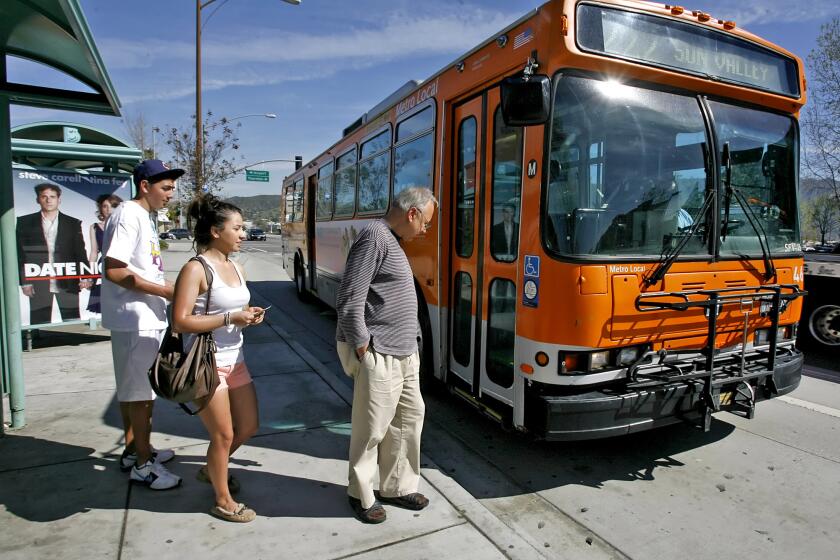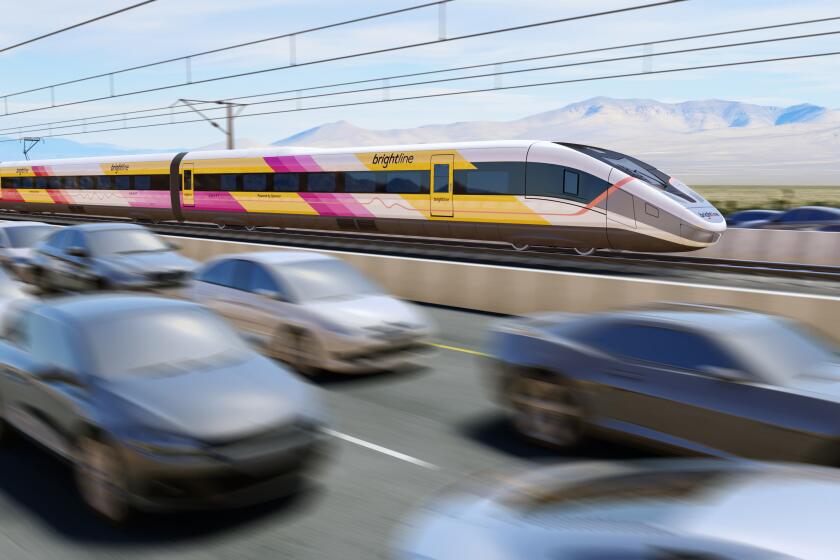TV Monitors May Warn About Coronado Bridge Traffic Jams
A state-of-the-art traffic monitoring system, using television surveillance cameras and electronic warning signs, may be installed next year along the Coronado Bridge and its approaches.
The $870,000 system, first of its kind in the San Diego area, could be installed by summer if the California Transportation Commission approves it Thursday.
Transportation officials, who plan to pay for the monitoring devices with excess toll revenues, say they envision a system much less ambitious than one in operation for more than a decade along several Los Angeles County freeways.
“Basically, we felt the bridge was where we wanted it because of the fact that it is heavily congested, it has a reversible lane and no shoulders,” said Ray Granstedt, regional traffic system chief for the state Department of Transportation (Caltrans).
“It is much more critical that we know what is going on there,” Granstedt added.
He said other San Diego County locations might be considered in the future.
The proposed system would employ five cameras, positioned to cover the entire 11,000-foot span, and three signs. The cameras would send pictures back to a TV screen at the toll plaza.
The electronic signs would be positioned to flash their warning messages to motorists coming toward the bridge in each direction on Interstate 5, and at the 4th Street approach to the bridge on Coronado.
The exact messages that would be used have not been decided, Granstedt said.
But he said the idea is to warn rush-hour drivers when conditions are so bad that they might want to consider the 20-mile detour around the bay, using California 75 along the Silver Strand.
Signs might warn drivers to expect heavy fog, that the bridge or a particular lane is closed, that there is an accident ahead or that marathon runners are using certain lanes of the bridge, he said.
“We want to stay away from the type of advertising thing they did when they first started in L.A.,” Granstedt said. “They were saying things like ‘Drive a motorcycle, save gas.’ ”
In Los Angeles, transportation officials now have 48 electronic warning signs spread over about 100 miles of the 500-mile freeway system. Fixed cameras cover the 10 busiest miles of the Santa Monica Freeway (Interstate 10) and the downtown loop where the four busiest freeways come together.
Those cameras, plus another that can be mounted on a helicopter, feed pictures back to a central “nerve center” 24 hours a day.
Because the money for San Diego’s monitoring system will come from bridge toll revenues that cannot be spent on other highway projects, officials expect little trouble getting tight-fisted transportation commissioners to approve it when they meet Thursday in Monterey.
At a time when transportation officials are facing large funding shortages for road projects, the Coronado bridge is an exception.
The bridge’s construction bond debt will be retired next summer, 17 years ahead of schedule. Gov. George Deukmejian has signed legislation allowing a continued toll but has insisted that the toll fund only bridge-related projects.
State transportation officials say they would soon have a huge revenue surplus if the $1.20 toll is continued at its present rate, even assuming takeover of maintenance costs, now paid out of a separate highway account.
Currently, a Caltrans study is under way to determine what types of projects can be financed with toll revenues and how much the toll, now the highest on any state-owned bridge, should be lowered.
More to Read
Start your day right
Sign up for Essential California for news, features and recommendations from the L.A. Times and beyond in your inbox six days a week.
You may occasionally receive promotional content from the Los Angeles Times.






